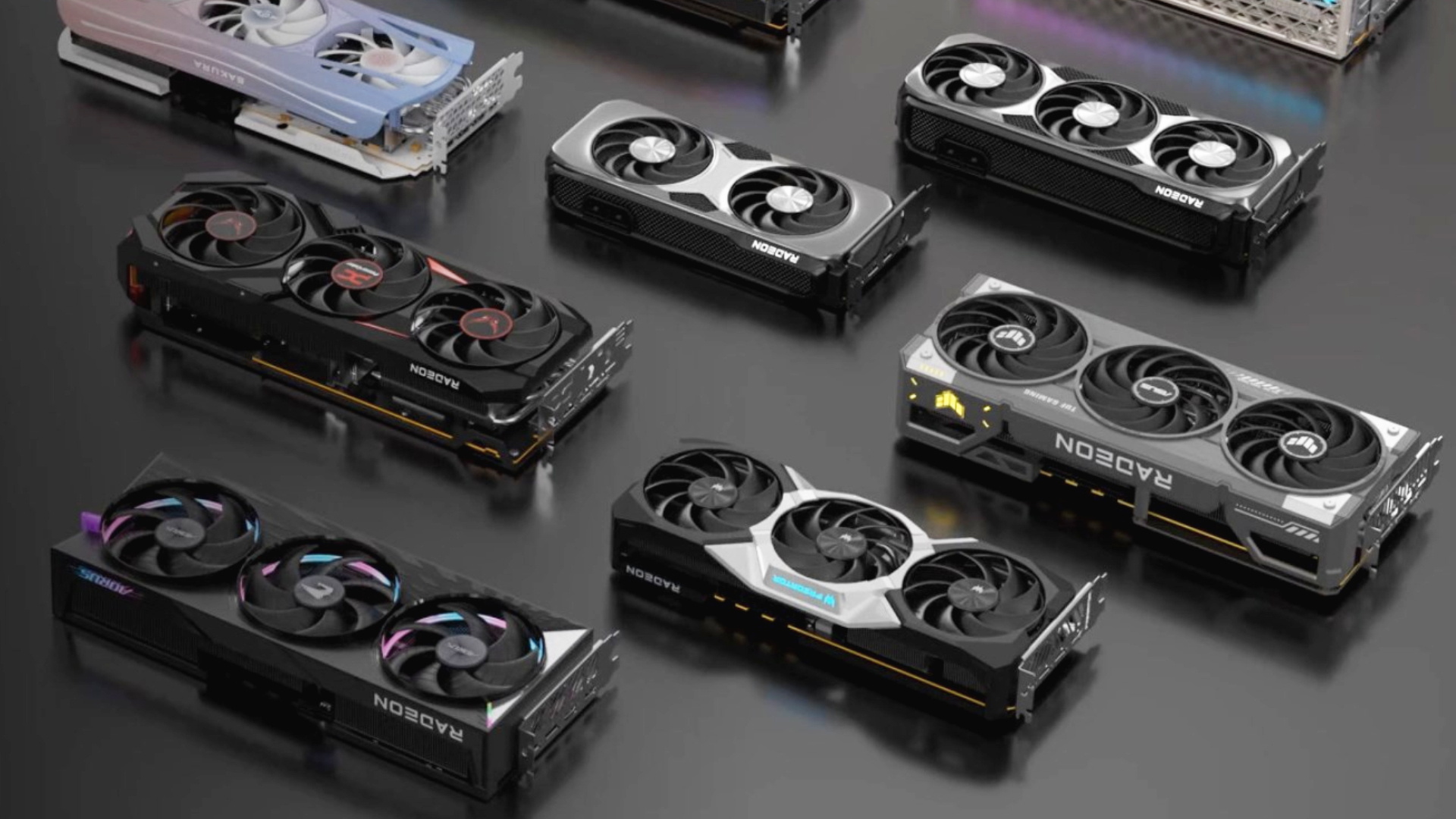
Well, when it comes to next-gen GPUs, AMD's CES 2025 presentation let us know that the Radeon RX 9070 and 9070 XT exist... and that's about it. Unfortunately, we didn't hear any mention of specs or pricing—no CU counts and no info about VRAM or bus widths.
However, Asus was the first to announce graphics cards featuring these RDNA 4 GPUs in the form of TUF OC and Prime OC variants, and what could have easily slipped under the radar is that these will have "a supersized 16GB serving of VRAM". In other words, the first confirmation of 16 GB of VRAM for the RX 9070 and RX 9070 XT has come from Asus, not AMD.
We've suspected we'd be dealing with 16 GB of VRAM since at least mid-2024 with some RDNA 4 GPU specs and performance rumours. But as we said at the time, we couldn't trust those figures for certain, and AMD recently told us that "the performance data out there for RDNA 4 is completely inaccurate".
Nevertheless, the "16 GB of VRAM" part of previous rumours seems to have been correct. We don't know whether that'll be GDDR6 or GDDR7—though our money's on GDDR6—but the 16 GB pretty much says it'll be a 256-bit memory bus.
16 GB of VRAM will put the 9070/9070 XT in line with the Radeon RX 7800 XT, which makes sense given the 9070, if it weren't for AMD's naming scheme change-up, would be an RX 7800 XT. It also puts it in line with the newly announced RTX 5070 Ti and 5080, which will both have 16 GB of (GDDR7) VRAM.
It also puts the RX 9070 and 9070 XT ahead of the RTX 4070 Ti, which is the graphics card that has a level of performance it looks like AMD is pitting the new RDNA 4 cards against.
Of course, all of that's just comparing raw VRAM capacity, which says very little outside the context of memory bandwidth and general architecture. On that front, we're still just as starved for info as we were before, albeit with promises of improved ray tracing, AI compute, and so on.
The biggest gaming news, reviews and hardware deals
Keep up to date with the most important stories and the best deals, as picked by the PC Gamer team.
We do know that these 9000-series graphics cards will be the only ones to support FSR 4, which promises "a dramatic improvement in terms of performance and quality". And if previous rumours are anything to go by (and remember, AMD seems to imply they're not) then we could be looking at 45% faster ray tracing performance than the 7900 XTX, too—this would be more in line with the RTX 4080 Super.
Whatever the case, AMD is explicitly focusing on mainstream price to performance, "aiming for a card that delivers outstanding performance where most gamers are buying their cards today." I'd say a 16 GB RTX 4070 Ti competitor would fit nicely into that category, provided the price is right. Let's hope AMD doesn't keep us waiting too long to share more.

Jacob got his hands on a gaming PC for the first time when he was about 12 years old. He swiftly realised the local PC repair store had ripped him off with his build and vowed never to let another soul build his rig again. With this vow, Jacob the hardware junkie was born. Since then, Jacob's led a double-life as part-hardware geek, part-philosophy nerd, first working as a Hardware Writer for PCGamesN in 2020, then working towards a PhD in Philosophy for a few years (result pending a patiently awaited viva exam) while freelancing on the side for sites such as TechRadar, Pocket-lint, and yours truly, PC Gamer. Eventually, he gave up the ruthless mercenary life to join the world's #1 PC Gaming site full-time. It's definitely not an ego thing, he assures us.


